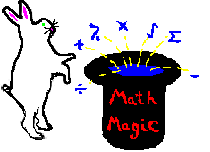

A. This method is easy if you understand changing a number from base b to base 10.
1. Ignoring the decimal, change the number to base 10. This is the numerator of the answer.
2. Count the number of digits that go past the decimal.
3. Raise the base to the number found in step 2. This is the denominator of the answer.
4. If the question is asking for a decimal, change the fraction into a decimal. If the question is asking for a fraction, make sure it is in simplest terms.
Ex [1] Change .134 into a base 10 decimal.
a) Changing 134 into base 10 we get 7. This is the numerator.
b) Since there are 2 digits past the decimal, the denominator is 42 or 16.
c) The fraction form of the answer is 7/16, but in a decimal it is .4375 which should have been memorized from here.
d) The answer is .4375.
Ex [2] Change .1235 into a base 10 fraction.
a) Changing 1235 into base 10 we get 38. This is the numerator.
b) Since there are 3 digits past the decimal, the denominator is 53 or 125.
c) The answer is 38/125.